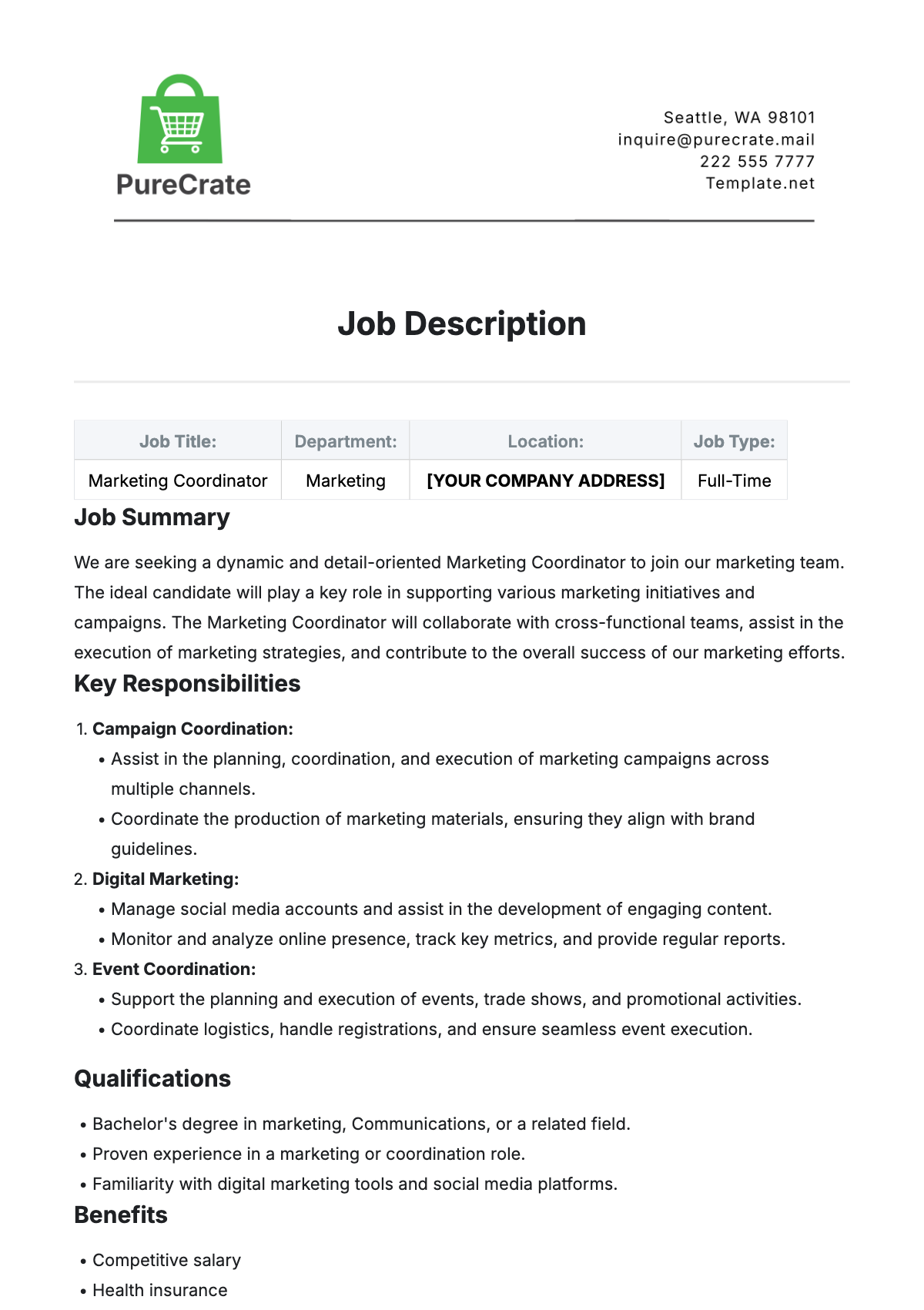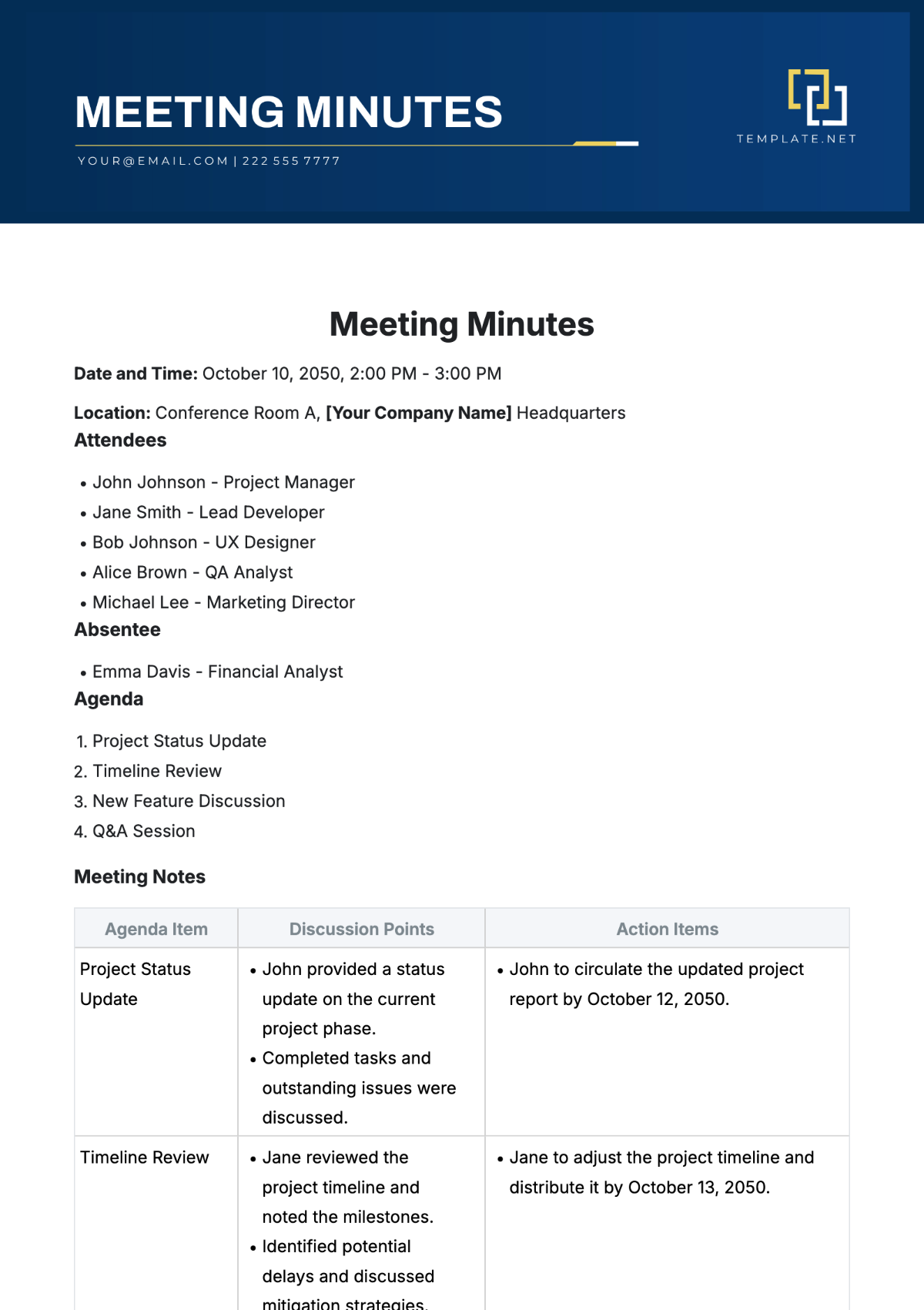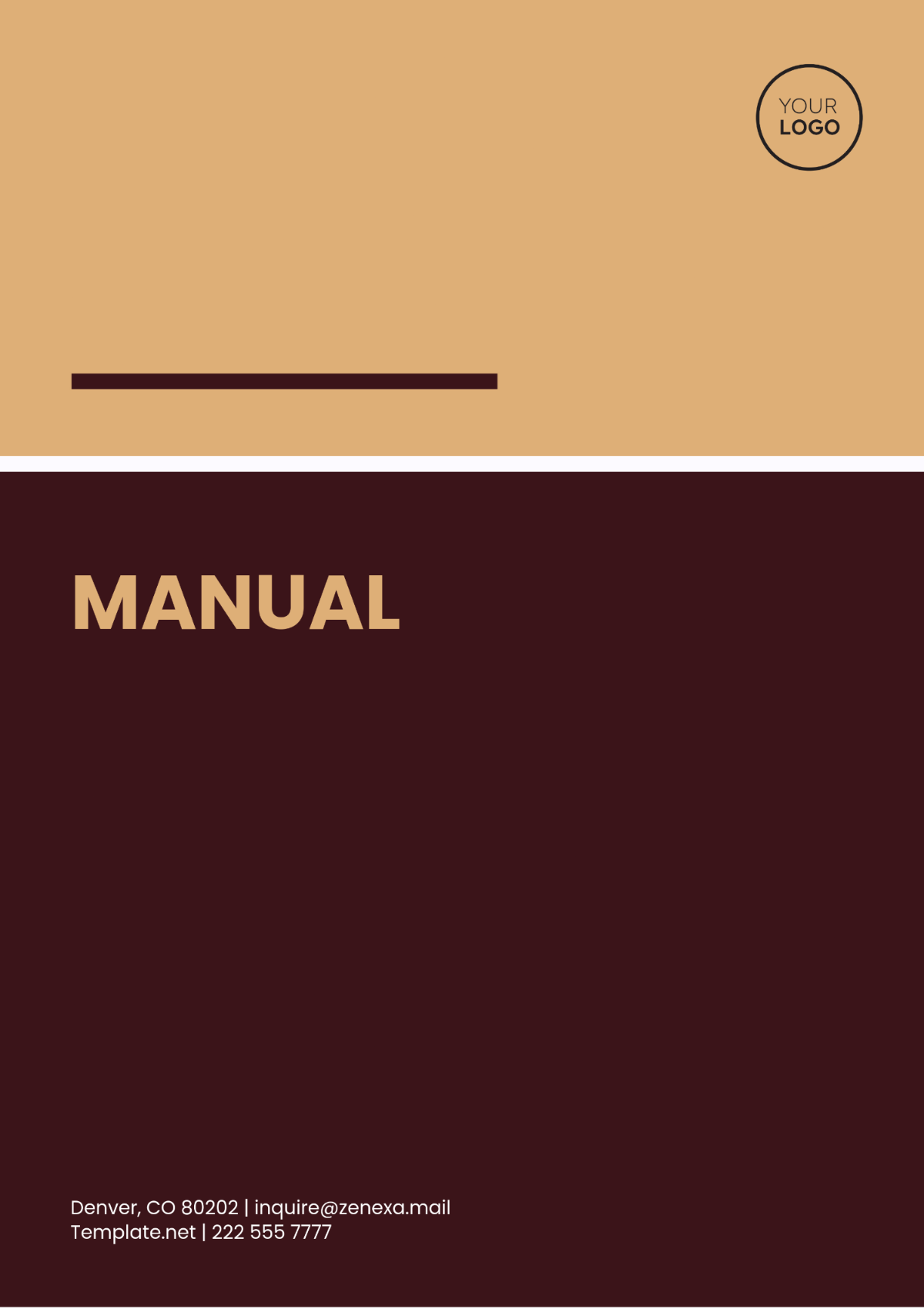Church Health Protocols SOP Design
I. Introduction
A. Purpose
Ensure Safety: The primary purpose of this Church Health Protocols SOP is to ensure the health and safety of all individuals attending, volunteering, or working at [Your Company Name]. These protocols aim to minimize health risks and promote a safe environment for everyone.
Comprehensive Guidelines: This SOP provides comprehensive guidelines on maintaining hygiene, preventing illness, and handling emergencies. It outlines the responsibilities of staff and volunteers in upholding these standards.
Promote Awareness: Another key purpose is to promote awareness among the church community about health and safety practices. Educating attendees on these protocols helps in creating a cooperative and informed environment.
B. Scope
Applicability: These health protocols apply to all events, services, and activities held at [Your Company Name]. It encompasses both regular and special gatherings.
All-Inclusive: This SOP includes guidelines for various aspects of health and safety, such as sanitation, food handling, and emergency procedures. It covers both indoor and outdoor activities.
Continuous Improvement: This document will be regularly reviewed and updated to reflect best practices and comply with health regulations. This ensures that the church remains a safe place for everyone.
C. Target Audience
Staff: Church staff, including administrative and maintenance personnel, are required to adhere to these protocols. They play a crucial role in implementing and monitoring health and safety measures.
Volunteers: Volunteers involved in church activities must follow the health protocols outlined in this SOP. Proper training and orientation will be provided to ensure they understand their responsibilities.
Attendees: Members of the congregation and visitors are also expected to follow the health protocols. Clear communication of these guidelines helps ensure everyone’s cooperation.
II. General Health and Safety Guidelines
A. Hygiene Practices
The following table outlines the basic hygiene practices to be maintained within the church premises:
No. | Component | Description |
|---|---|---|
1 | Handwashing | Wash hands with soap and water for at least 20 seconds. |
2 | Use of Hand Sanitizers | Use hand sanitizers containing at least 60% alcohol. |
3 | Surface Disinfection | Regularly disinfect commonly touched surfaces. |
4 | Personal Protective Equipment (PPE) | Use gloves and masks where appropriate. |
5 | Waste Disposal | Dispose of waste in designated bins promptly. |
A. Handwashing
Frequency: It is essential to wash hands frequently, especially after using the restroom, before eating, and after coughing or sneezing. Regular handwashing helps prevent the spread of germs.
Proper Technique: Ensure hands are washed thoroughly, covering all parts of the hands, including the back, under nails, and between fingers. Proper technique is crucial for effective hygiene.
Facilities: The church should provide adequate handwashing facilities with soap and water. These facilities should be easily accessible to all attendees.
Signage: Place signs near handwashing stations to remind everyone of the importance of hand hygiene. Visual cues help reinforce good practices.
B. Use of Hand Sanitizers
Availability: Hand sanitizers should be readily available throughout the church, especially at entrances and high-traffic areas. This ensures easy access for everyone.
Usage: Encourage the use of hand sanitizers when handwashing is not possible. Hand sanitizers are effective in reducing germs when used correctly.
Supervision: Supervise the use of hand sanitizers, especially for young children. Ensure they use the appropriate amount and do not ingest it.
Refill Stations: Regularly check and refill hand sanitizer stations to ensure they are always stocked. Maintaining supply is essential for continuous hygiene.
C. Surface Disinfection
High-Touch Areas: Focus disinfection efforts on high-touch areas such as door handles, light switches, and seating. These areas are more likely to harbor germs.
Cleaning Schedule: Establish a regular cleaning schedule to ensure all surfaces are disinfected frequently. Consistency is key to maintaining a clean environment.
Approved Disinfectants: Use disinfectants that are approved by health authorities and effective against a wide range of pathogens. Follow the manufacturer’s instructions for use.
Documentation: Keep a log of cleaning activities, noting the date, time, and areas cleaned. This helps in monitoring and accountability.
D. Personal Protective Equipment (PPE)
Mandatory Use: Mandate the use of masks and gloves for certain activities, such as food handling or first aid. PPE provides an extra layer of protection.
Distribution: Ensure PPE is available and distributed to staff, volunteers, and attendees as needed. Adequate supply prevents shortages.
Proper Disposal: Provide instructions on the proper disposal of used PPE to prevent contamination. Designate bins for PPE disposal.
Training: Offer training on the correct use and disposal of PPE. Proper use enhances its effectiveness in preventing disease transmission.
E. Waste Disposal
Designated Bins: Place designated bins for different types of waste, including regular trash and PPE. Clear labeling helps in correct disposal.
Regular Collection: Ensure waste bins are emptied regularly to prevent overflow and maintain cleanliness. Frequent collection reduces the risk of contamination.
Safe Handling: Train staff on safe handling and disposal of waste. This includes using gloves and following hygiene practices.
Hygiene Stations: Provide hygiene stations near waste bins for hand sanitizing after waste disposal. This reinforces cleanliness.
Maintaining high standards of hygiene is crucial for preventing the spread of illness within the church. These guidelines help create a safe and healthy environment for everyone.
III. Food Handling and Safety
The following table outlines the key steps for ensuring food safety during church events:
No. | Step | Description |
|---|---|---|
1 | Food Source | Ensure food is sourced from reputable suppliers. |
2 | Storage | Store food at appropriate temperatures. |
3 | Preparation | Follow safe food preparation practices. |
4 | Serving | Serve food in a hygienic manner. |
5 | Leftovers | Properly handle and store leftovers. |
A. Food Source
Reputable Suppliers: Always source food from suppliers known for their hygiene and quality standards. This reduces the risk of contamination and foodborne illnesses.
Inspection: Inspect all food deliveries upon arrival to ensure they meet safety standards. Check for signs of spoilage or damage.
Documentation: Maintain records of food sources and suppliers. This ensures traceability in case of any issues.
Certifications: Prefer suppliers with relevant food safety certifications. This indicates their compliance with health regulations.
B. Storage
Temperature Control: Store perishable items in refrigerators or freezers at the recommended temperatures. Proper storage prevents bacterial growth.
Separation: Keep raw and cooked foods separate to avoid cross-contamination. Use designated storage areas for different types of food.
Labeling: Label all food items with dates and contents. This helps in managing inventory and ensures the use of fresh ingredients.
Inspection: Regularly inspect storage areas for cleanliness and proper functioning of equipment. Ensure no expired or spoiled items are stored.
C. Preparation
Clean Surfaces: Ensure all surfaces, utensils, and equipment used in food preparation are thoroughly cleaned and sanitized. This prevents contamination.
Hand Hygiene: Food handlers must wash their hands before and after handling food. Hand hygiene is crucial for preventing the spread of germs.
Cooking Temperatures: Cook food to the recommended internal temperatures to kill harmful bacteria. Use a food thermometer to check temperatures.
Avoid Cross-Contamination: Use separate cutting boards and utensils for raw and cooked foods. This prevents the transfer of harmful bacteria.
D. Serving
Hygienic Practices: Serve food using clean utensils and wear gloves if necessary. Avoid touching food with bare hands.
Buffet Management: If serving buffet-style, ensure utensils are provided for each dish and guests do not use their hands. Monitor the buffet to maintain hygiene.
Portion Control: Serve appropriate portions to minimize waste and ensure everyone is served. Proper portioning also helps in maintaining hygiene.
Temperature Maintenance: Keep hot foods hot and cold foods cold during serving. This prevents the growth of bacteria.
E. Leftovers
Immediate Storage: Store leftovers in the refrigerator or freezer within two hours of serving. This prevents bacterial growth.
Proper Containers: Use airtight containers to store leftovers. Label them with the date of storage.
Reheating: Reheat leftovers to the recommended temperatures before serving again. Ensure even heating to kill any bacteria.
Disposal: Dispose of any leftovers that have been sitting out for more than two hours or show signs of spoilage. This ensures food safety.
Proper food handling and safety practices are essential to prevent foodborne illnesses during church events. These guidelines help ensure that food served is safe and hygienic.
IV. Emergency Procedures
A. Medical Emergencies
Immediate Response: Administer first aid or CPR if necessary while waiting for emergency services. Quick response can save lives.
Emergency Contacts: Keep a list of emergency contacts and phone numbers readily available. This ensures timely communication with medical personnel.
First Aid Kits: Ensure first aid kits are easily accessible and well-stocked. Regularly check and replenish supplies.
Training: Provide first aid and CPR training to staff and volunteers. This equips them with the skills to handle medical emergencies.
Documentation: Document the incident and actions taken. This information is useful for future reference and improving emergency protocols.
B. Fire Safety
Evacuation Plan: Develop and clearly display an evacuation plan. Ensure all staff and volunteers are familiar with it.
Fire Drills: Conduct regular fire drills to practice evacuation procedures. This helps in preparing everyone for an actual emergency.
Fire Extinguishers: Install and maintain fire extinguishers at strategic locations. Train staff on how to use them.
Clear Exits: Keep all exits clear and accessible at all times. This ensures a smooth evacuation process.
Alarm Systems: Ensure fire alarm systems are functional and regularly tested. Quick detection of fire is crucial for safety.
C. Natural Disasters
Preparedness Plan: Develop a preparedness plan for natural disasters such as earthquakes, floods, or storms. This includes identifying safe areas and evacuation routes.
Emergency Supplies: Stock emergency supplies such as water, food, and blankets. These supplies are essential during prolonged emergencies.
Communication: Establish a communication plan to inform attendees about the situation and necessary actions. Use multiple channels for effective communication.
Training: Provide training on natural disaster preparedness to staff and volunteers. Knowledge of protocols ensures better handling of emergencies.
Regular Updates: Keep the preparedness plan updated based on new information and best practices. Regular reviews enhance readiness.
D. Security Threats
Risk Assessment: Conduct regular risk assessments to identify potential security threats. This helps in developing appropriate countermeasures.
Access Control: Implement access control measures to monitor and restrict entry to the premises. This includes visitor registration and identification checks.
Surveillance: Use surveillance cameras to monitor the premises. Surveillance helps in detecting and responding to security threats promptly.
Emergency Response Team: Form an emergency response team trained to handle security threats. Their presence ensures quick and coordinated action.
Communication: Establish clear communication channels to alert staff and attendees about security threats. Timely communication prevents panic and ensures safety.
Post-Incident Review: After addressing a security threat, conduct a review to identify strengths and areas for improvement. This helps in refining security protocols.
E. Communication
Multiple Channels: Use multiple communication channels such as PA systems, text messages, and social media to inform attendees during emergencies. Effective communication ensures everyone is aware of the situation.
Designated Spokesperson: Appoint a designated spokesperson to provide consistent and accurate information. This prevents the spread of rumors and misinformation.
Clear Instructions: Provide clear and concise instructions to attendees about the actions they need to take. Clarity in communication is essential during emergencies.
Regular Updates: Keep attendees informed with regular updates about the status of the emergency and any new instructions. Continuous communication maintains order and calm.
F. Post-Emergency Actions
Debriefing: Conduct debriefing sessions with staff and volunteers to discuss the emergency response. This helps in identifying lessons learned and areas for improvement.
Counseling: Provide counseling services to those affected by the emergency. Emotional support is important for recovery.
Documentation: Document the emergency and the response actions taken. This information is valuable for future planning and preparedness.
Evaluation: Evaluate the effectiveness of the emergency response and update protocols as needed. Continuous improvement ensures better readiness for future emergencies.
Gratitude: Acknowledge and thank all those who assisted during the emergency. Recognizing their efforts fosters a supportive and cooperative community.
Effective emergency procedures are crucial for ensuring the safety and well-being of everyone at the church. These protocols help in handling emergencies efficiently and minimizing risks.
V. Sanitation and Cleanliness
The following table outlines the ways to maintain sanitation and cleanliness within the church premises:
No. | Component | Description |
|---|---|---|
1 | Regular Cleaning | Daily cleaning of all areas. |
2 | Deep Cleaning | Weekly deep cleaning of high-traffic areas. |
3 | Restroom Maintenance | Frequent cleaning and restocking of restrooms. |
4 | Waste Management | Proper waste disposal practices. |
5 | Pest Control | Regular pest control measures. |
6 | Air Quality | Ensuring good indoor air quality. |
A. Regular Cleaning
Daily Schedule: Implement a daily cleaning schedule to ensure all areas of the church are cleaned regularly. This includes sweeping, mopping, and dusting.
High-Touch Areas: Pay special attention to high-touch areas such as door handles, light switches, and seating. Frequent cleaning of these areas reduces the spread of germs.
Cleaning Products: Use cleaning products that are effective against a broad range of pathogens. Ensure they are used according to the manufacturer’s instructions.
Staff Training: Train cleaning staff on proper cleaning techniques and the use of cleaning products. This ensures thorough and effective cleaning.
Monitoring: Regularly monitor the cleanliness of the premises. Conduct inspections to ensure cleaning standards are maintained.
B. Deep Cleaning
Weekly Schedule: Conduct deep cleaning of high-traffic areas such as the sanctuary, fellowship hall, and classrooms on a weekly basis. This includes thorough cleaning of floors, carpets, and upholstery.
Equipment: Use appropriate equipment such as vacuum cleaners and steam cleaners for deep cleaning. This ensures effective removal of dirt and germs.
Special Attention: Pay special attention to areas that are not cleaned daily, such as behind furniture and in corners. Deep cleaning ensures a comprehensive clean.
Professional Services: Consider hiring professional cleaning services for deep cleaning tasks. Their expertise and equipment can enhance the cleanliness of the premises.
C. Restroom Maintenance
Frequent Cleaning: Clean restrooms frequently throughout the day to ensure they remain sanitary. This includes cleaning toilets, sinks, and floors.
Restocking Supplies: Regularly restock restroom supplies such as soap, paper towels, and toilet paper. Ensure supplies are always available.
Odor Control: Use air fresheners and ventilation to control odors in restrooms. A pleasant-smelling restroom enhances the overall experience.
Inspection: Conduct regular inspections of restrooms to ensure cleanliness and proper functioning of fixtures. Address any issues promptly.
D. Waste Management
Designated Bins: Provide designated bins for different types of waste, including recyclables and non-recyclables. Clear labeling helps in correct disposal.
Regular Collection: Ensure waste bins are emptied regularly to prevent overflow and maintain cleanliness. Frequent collection reduces the risk of contamination.
Safe Handling: Train staff on safe handling and disposal of waste. This includes using gloves and following hygiene practices.
Recycling: Promote recycling by providing bins for recyclable materials and educating attendees on proper recycling practices. This supports environmental sustainability.
E. Pest Control
Regular Inspections: Conduct regular inspections for signs of pests such as rodents and insects. Early detection helps in effective control.
Preventive Measures: Implement preventive measures such as sealing cracks and removing food sources to deter pests. Prevention is key to effective pest control.
Professional Services: Hire professional pest control services for regular treatments. Their expertise ensures thorough and safe pest management.
Documentation: Keep records of pest control activities, including inspections and treatments. This helps in monitoring and maintaining pest control measures.
F. Air Quality
Ventilation: Ensure good ventilation in all areas of the church. Proper airflow helps in maintaining indoor air quality.
Air Purifiers: Use air purifiers in areas with poor ventilation. This helps in removing contaminants from the air.
Maintenance: Regularly maintain HVAC systems to ensure they are functioning properly. Clean filters and ducts to prevent the buildup of dust and allergens.
Monitoring: Monitor indoor air quality regularly. Use air quality monitors to detect and address any issues promptly.
Maintaining sanitation and cleanliness is crucial for creating a healthy environment in the church. These practices help prevent the spread of illness and ensure a pleasant experience for everyone.
VI. Health Screening and Monitoring
The following table outlines the ways for health screening and monitoring within the church premises:
No. | Component | Description |
|---|---|---|
1 | Temperature Checks | Conduct temperature checks at entry points. |
2 | Health Questionnaires | Use health questionnaires to screen attendees. |
3 | Monitoring Symptoms | Monitor symptoms among staff and attendees. |
4 | Isolation Procedures | Implement procedures for isolation. |
5 | Reporting Illness | Establish protocols for reporting illness. |
A. Temperature Checks
Entry Points: Conduct temperature checks at all entry points to the church. This helps in identifying individuals with fever, a common symptom of many illnesses.
Non-Contact Devices: Use non-contact thermometers to reduce the risk of cross-contamination. Ensure devices are regularly calibrated for accuracy.
Trained Personnel: Assign trained personnel to conduct temperature checks. Proper training ensures accurate and efficient screening.
Follow-Up: Have a protocol in place for individuals with elevated temperatures, such as secondary screening or advising them to seek medical attention.
Privacy: Ensure privacy during temperature checks to maintain confidentiality and respect for individuals.
B. Health Questionnaires
Pre-Entry Screening: Use health questionnaires to screen attendees before they enter the premises. This helps in identifying potential health risks.
Relevant Questions: Include questions about recent travel, contact with sick individuals, and symptoms experienced. Relevant questions help in accurate screening.
Online Option: Provide an online option for completing the questionnaire to reduce physical contact. This can be done prior to arrival at the church.
Review Process: Have a process in place for reviewing completed questionnaires and determining the next steps. This ensures thorough screening.
Confidentiality: Maintain the confidentiality of health information provided in the questionnaires. Proper handling of data ensures privacy.
C. Monitoring Symptoms
Regular Checks: Conduct regular checks for symptoms of illness among staff and attendees. Early detection helps in preventing the spread of illness.
Awareness: Educate staff and attendees about the symptoms to watch for and the importance of reporting them. Awareness promotes early identification.
Isolation Protocols: Have protocols in place for isolating individuals who exhibit symptoms. Isolation helps in preventing the spread of illness.
Communication: Communicate the importance of monitoring symptoms to the church community. Clear communication ensures cooperation.
Documentation: Document instances of reported symptoms and actions taken. This information is useful for tracking and managing health risks.
D. Isolation Procedures
Designated Area: Designate an area for isolating individuals who show symptoms of illness. This area should be away from high-traffic zones.
Immediate Action: Take immediate action to isolate individuals showing symptoms to prevent exposure to others. Prompt action minimizes risk.
Support: Provide support to isolated individuals, such as access to medical care and communication with family members. Support ensures their well-being.
Sanitization: Thoroughly sanitize the isolation area after use to prevent contamination. Proper cleaning practices are essential.
Follow-Up Care: Ensure follow-up care and monitoring for isolated individuals. This helps in managing their health and recovery.
E. Reporting Illness
Clear Protocols: Establish clear protocols for reporting illness among staff and attendees. This includes who to contact and the steps to follow.
Encouragement: Encourage everyone to report any symptoms or illness promptly. Early reporting helps in taking timely action.
Confidentiality: Ensure confidentiality of health information reported. Respect for privacy is crucial.
Response Plan: Have a response plan in place for reported cases of illness. This includes notifying relevant authorities and taking preventive measures.
Follow-Up: Conduct follow-up with individuals who have reported illness to monitor their condition and recovery. Follow-up ensures continuous care.
Health screening and monitoring are critical components of maintaining a safe environment in the church. These practices help in early identification of health risks and prompt action to mitigate them.
VII. Health Education and Awareness
The following table outlines the ways for promoting health education and awareness within the church community:
No. | Component | Description |
|---|---|---|
1 | Health Seminars | Conduct regular health seminars and workshops. |
2 | Educational Materials | Distribute health-related educational materials. |
3 | Awareness Campaigns | Organize awareness campaigns on various health topics. |
4 | Collaboration | Collaborate with health professionals and organizations. |
5 | Feedback Mechanisms | Establish mechanisms for receiving and addressing feedback. |
A. Health Seminars
Regular Schedule: Organize health seminars and workshops on a regular schedule. These sessions provide valuable information on various health topics.
Expert Speakers: Invite health professionals to speak at seminars. Their expertise ensures accurate and reliable information.
Interactive Sessions: Make the seminars interactive to engage the audience. Encourage questions and discussions to enhance learning.
Diverse Topics: Cover a wide range of health topics, including nutrition, mental health, and preventive care. Diverse topics address different aspects of health.
Accessibility: Ensure seminars are accessible to all members of the church community. Use different formats such as in-person and online sessions.
B. Educational Materials
Pamphlets and Brochures: Distribute pamphlets and brochures on various health topics. These materials provide easy-to-read information.
Digital Resources: Provide digital resources such as e-books and online articles. Digital resources are easily accessible and shareable.
Visual Aids: Use visual aids such as posters and infographics to convey health information. Visual aids are effective in capturing attention.
Resource Center: Set up a resource center within the church where members can access health information. A dedicated space encourages learning.
Regular Updates: Regularly update educational materials to ensure they reflect current health guidelines and information.
C. Awareness Campaigns
Health Themes: Organize campaigns around specific health themes, such as heart health or diabetes awareness. Themed campaigns focus attention on important issues.
Community Involvement: Involve the church community in planning and executing campaigns. Community involvement enhances engagement and ownership.
Events and Activities: Plan events and activities such as health fairs, walkathons, and screenings. Events provide practical experiences and encourage participation.
Media Outreach: Use media channels such as newsletters, social media, and the church website to promote campaigns. Media outreach extends the reach of campaigns.
Evaluation: Evaluate the effectiveness of awareness campaigns. Gather feedback and use it to improve future campaigns.
D. Collaboration
Health Professionals: Collaborate with health professionals to provide accurate and up-to-date health information. Partnerships with professionals add credibility.
Health Organizations: Partner with health organizations for resources and support. Collaborations enhance the scope and impact of health initiatives.
Workshops and Clinics: Organize workshops and clinics with the help of health professionals and organizations. Joint efforts provide comprehensive services.
Referral Systems: Establish referral systems to connect church members with health services and resources. Referrals ensure access to necessary care.
Shared Goals: Align health initiatives with the goals of partner organizations. Shared goals create synergies and enhance effectiveness.
E. Feedback Mechanisms
Surveys: Conduct surveys to gather feedback on health initiatives and educational efforts. Surveys provide insights into community needs and preferences.
Suggestion Boxes: Set up suggestion boxes for members to share their ideas and concerns. Suggestion boxes encourage participation and provide valuable input.
Focus Groups: Organize focus groups to discuss health topics and gather detailed feedback. Focus groups offer in-depth perspectives.
Feedback Sessions: Hold feedback sessions after health events and seminars. Sessions allow immediate feedback and discussions.
Continuous Improvement: Use the feedback collected to continuously improve health education and awareness efforts. Responsive initiatives address community needs effectively.
Promoting health education and awareness is essential for fostering a well-informed church community. These initiatives help in empowering members to make informed health decisions.
VIII. Special Considerations
The following table outlines special considerations for vulnerable populations within the church community:
No. | Component | Description |
|---|---|---|
1 | Elderly Care | Special measures for the care of elderly members. |
2 | Children’s Safety | Guidelines for ensuring the safety of children. |
3 | Disability Support | Providing support for individuals with disabilities. |
4 | Mental Health | Addressing mental health needs. |
5 | Chronic Conditions | Managing the needs of individuals with chronic conditions. |
A. Elderly Care
Accessibility: Ensure all areas of the church are accessible to elderly members. This includes ramps, handrails, and seating arrangements.
Health Monitoring: Monitor the health of elderly members regularly. Provide support for managing health conditions and medications.
Social Support: Offer social support through community groups and activities. Social interactions help in maintaining mental and emotional well-being.
Transportation: Provide transportation services for elderly members who may have difficulty commuting. Ensuring mobility enhances participation.
Safety Measures: Implement safety measures to prevent falls and injuries. This includes proper lighting and non-slip flooring.
B. Children’s Safety
Supervision: Ensure adequate supervision of children during church activities. Proper supervision prevents accidents and ensures safety.
Childproofing: Childproof areas where children will be present. This includes securing furniture and keeping hazardous items out of reach.
Programs and Activities: Offer age-appropriate programs and activities for children. Engaging activities promote learning and development.
Emergency Contact Information: Keep updated emergency contact information for all children. Quick access to contacts is crucial in emergencies.
Training: Provide training for staff and volunteers on child safety and first aid. Trained personnel ensure the safety and well-being of children.
C. Disability Support
Accessibility: Ensure the church premises are accessible to individuals with disabilities. This includes ramps, elevators, and accessible restrooms.
Assistive Devices: Provide assistive devices such as hearing aids and mobility aids. These devices support participation and inclusion.
Support Services: Offer support services such as sign language interpretation and braille materials. Support services cater to diverse needs.
Inclusive Programs: Design programs and activities to be inclusive of individuals with disabilities. Inclusion fosters a sense of belonging.
Awareness and Training: Raise awareness and provide training on disability support among staff and volunteers. Education promotes understanding and empathy.
D. Mental Health
Counseling Services: Provide counseling services to support mental health needs. Professional counseling helps in managing stress and emotional issues.
Support Groups: Organize support groups for individuals facing mental health challenges. Group support provides a sense of community and understanding.
Awareness Campaigns: Conduct awareness campaigns to reduce stigma around mental health. Promoting openness encourages individuals to seek help.
Workshops and Seminars: Hold workshops and seminars on mental health topics. Education enhances awareness and knowledge.
Crisis Intervention: Have protocols in place for crisis intervention. Immediate support is crucial during mental health crises.
E. Chronic Conditions
Health Monitoring: Regularly monitor the health of individuals with chronic conditions. Ongoing monitoring helps in managing conditions effectively.
Medication Management: Provide support for medication management. Ensuring adherence to medication schedules is crucial for health.
Support Services: Offer support services such as transportation to medical appointments. Support services facilitate access to care.
Education and Awareness: Educate the church community about chronic conditions. Awareness promotes understanding and support.
Peer Support: Establish peer support groups for individuals with chronic conditions. Peer support provides emotional and practical assistance.
Special considerations for vulnerable populations are essential for creating an inclusive and supportive church environment. These measures ensure the well-being and participation of all members.
IX. Review and Update
A. Review
This Church Health Protocols SOP will be reviewed annually to ensure it remains current and effective. The review process will involve evaluating the implementation of the protocols and their impact on the church community. Feedback from staff and attendees will be gathered to identify areas for improvement. Any new health guidelines or regulations will be incorporated into the SOP. Regular reviews will help maintain a high standard of health and safety within the church.
B. Update
Updates to this SOP will be made as needed, based on the results of the annual review and any emerging health concerns. Changes will be communicated promptly to all staff and attendees to ensure continued compliance. Training sessions will be provided to familiarize everyone with the updated protocols. The aim is to continuously enhance the effectiveness of our health and safety measures. Keeping the SOP up to date will ensure the well-being of our church community in the face of evolving health challenges.

















































